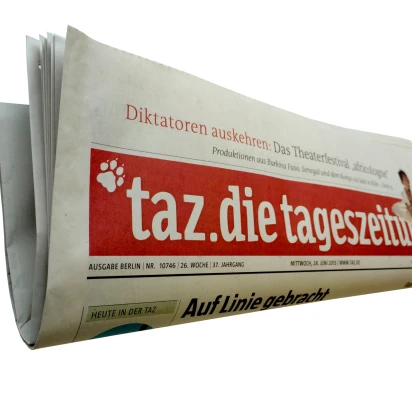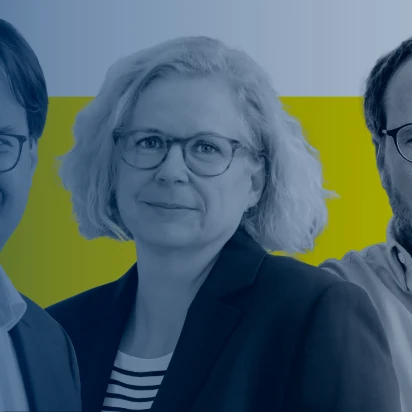
DIE ZEIT: multi-channel publishing and central DAM with the InterRed editing system
- 14.06.2021
The successful weekly newspaper DIE ZEIT is produced using the InterRed editing system. With over 300 editing system users, more than 25 local variants and magazines, high-quality content, increasing circulation figures and intelligent workflows, the introduction of the new publishing solution enables modern production workflows and decentralised working.

Monica Sawhney, CFO at ZEIT Verlagsgruppe; Iris Mainka, Managing Editor at DIE ZEIT; Torsten Bastian, Director Production & IT. © ZEIT Verlagsgruppe
Increasing circulation, high quality, future-proof solution
With a circulation of over half a million copies and a reach of 2.2 million readers, DIE ZEIT is one of Germany's most successful newspapers. While a large proportion of newspapers are struggling with falling circulation, the weekly newspaper's circulation continues to grow and it continues to attract new readers – both in print and through its digital channels.
More than 300 editors and layout designers at Zeitverlag benefit above all from the future-proof nature of the newly introduced solution. InterRed's comprehensive multi-channel publishing capabilities enable the automated transfer of print content to online and app output channels. InterRed seamlessly connects to existing systems and exchanges content bidirectionally. This optimisation of the production and approval processes opens up new possibilities for editorial collaboration in many areas. The fine-grained rights concept, for example, as well as functions such as InterRed MediaSync, which allows content to be quickly reused for other output channels at the push of a button, provide support in this regard. The transformation costs for the digital use of content have thus been significantly reduced, while at the same time new, more flexible workflows have been created.
Integrated plug-ins for Adobe InDesign and Adobe InCopy, as well as the option of browser-based work, enable employees to create the newspaper decentrally. Due to the coronavirus situation, the majority of employees then had to work from home within a short period of time. The InterRed editorial system provided the technical basis for this. This also makes mobile working possible in general, for example when travelling abroad. In this way, both the weekly newspaper itself and the associated supplements, a total of 18 objects, which also include magazines with regionalised local characteristics, can be created, managed and published with InterRed.
Digital asset management and central content pool
Content supplied by picture agencies is integrated directly into InterRed's digital asset management. This means that the picture editors can research and edit suitable images in the integrated media database and the layout designers can place them in the articles accordingly. The publisher's entire archive since 1946 was also mapped in InterRed as part of the project. This has turned several distributed data sources into a central, shared basis. This means that all content can be managed flexibly and in a future-proof way in a centralised system.
InterRed also makes this data available to various third-party systems. A powerful API enables integration with a royalty system developed by Zeitverlag, which is supplied with an automated checklist.
Monica Sawhney, CFO at ZEIT Verlagsgruppe, is convinced by the introduction of the comprehensive solution: ‘With InterRed, we are relying on a future-proof multi-channel publishing system to continue to successfully deliver our high-quality content. In particular, the group's central digital asset management offers the opportunity for new, overarching business models.’

Monica Sawhney, CFO at the ZEIT publishing group © ZEIT
Iris Mainka, editor-in-chief at ZEIT's print editorial team, particularly praises the flexible working options from the home office: ‘Changing an editorial system is no small feat during operation. But although DIE ZEIT, with its very individual and sophisticated layout, places great demands on editorial software, the change has been successful without any loss of quality.’

Iris Mainka, editor-in-chief at the ZEIT print editorial office © ZEIT
The head of the project, who is also the Director of Production & IT, Torsten Bastian, looks back on a successful project: ‘With InterRed, our production processes are now mapped in a future-proof way. This ensures efficient collaboration between the individual departments in the group and across all output channels. During the implementation of the project, the close and very good cooperation between the ZEIT publishing group and InterRed was crucial for the successful realisation.’

Torsten Bastian, Director Production & IT © ZEIT







